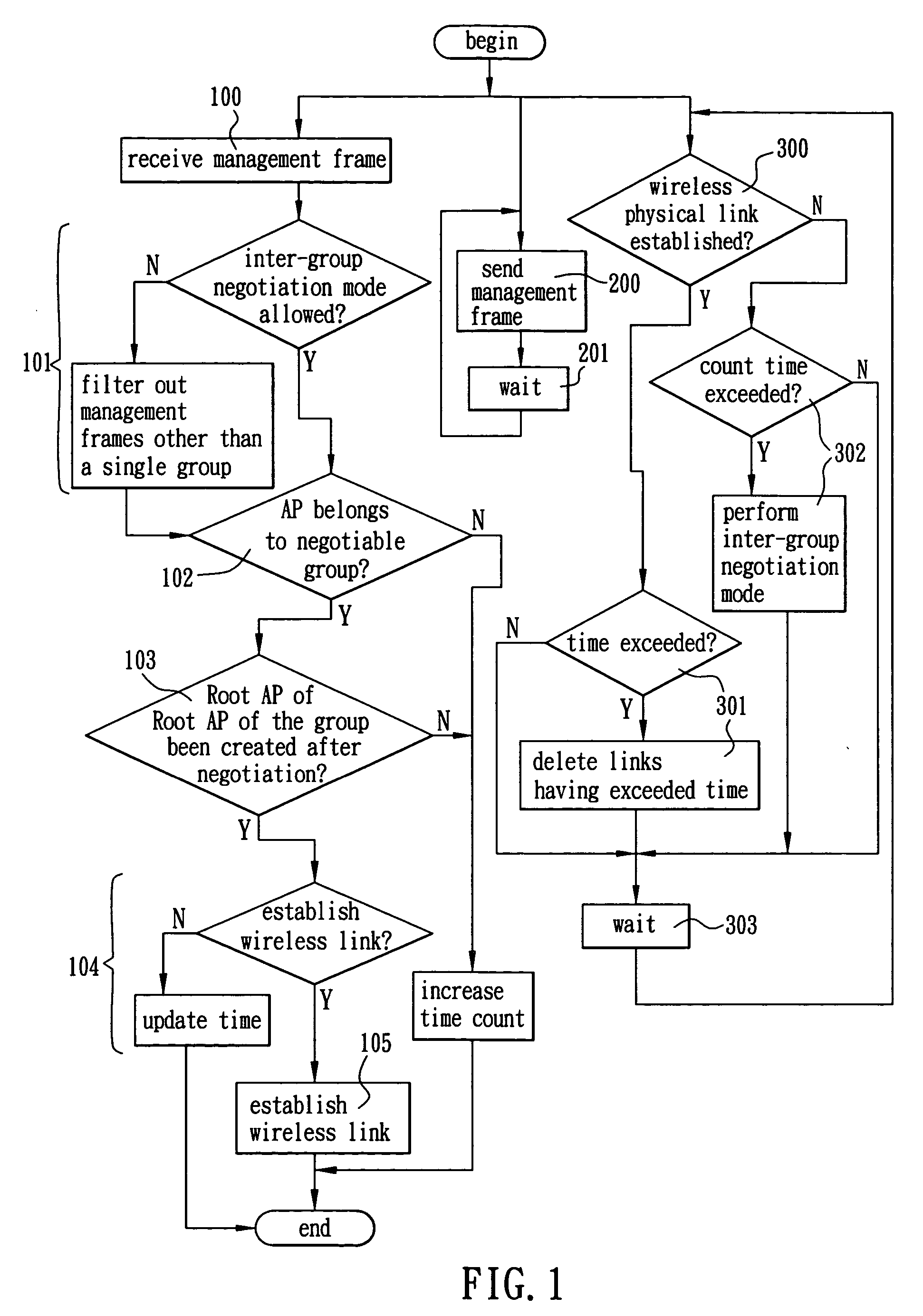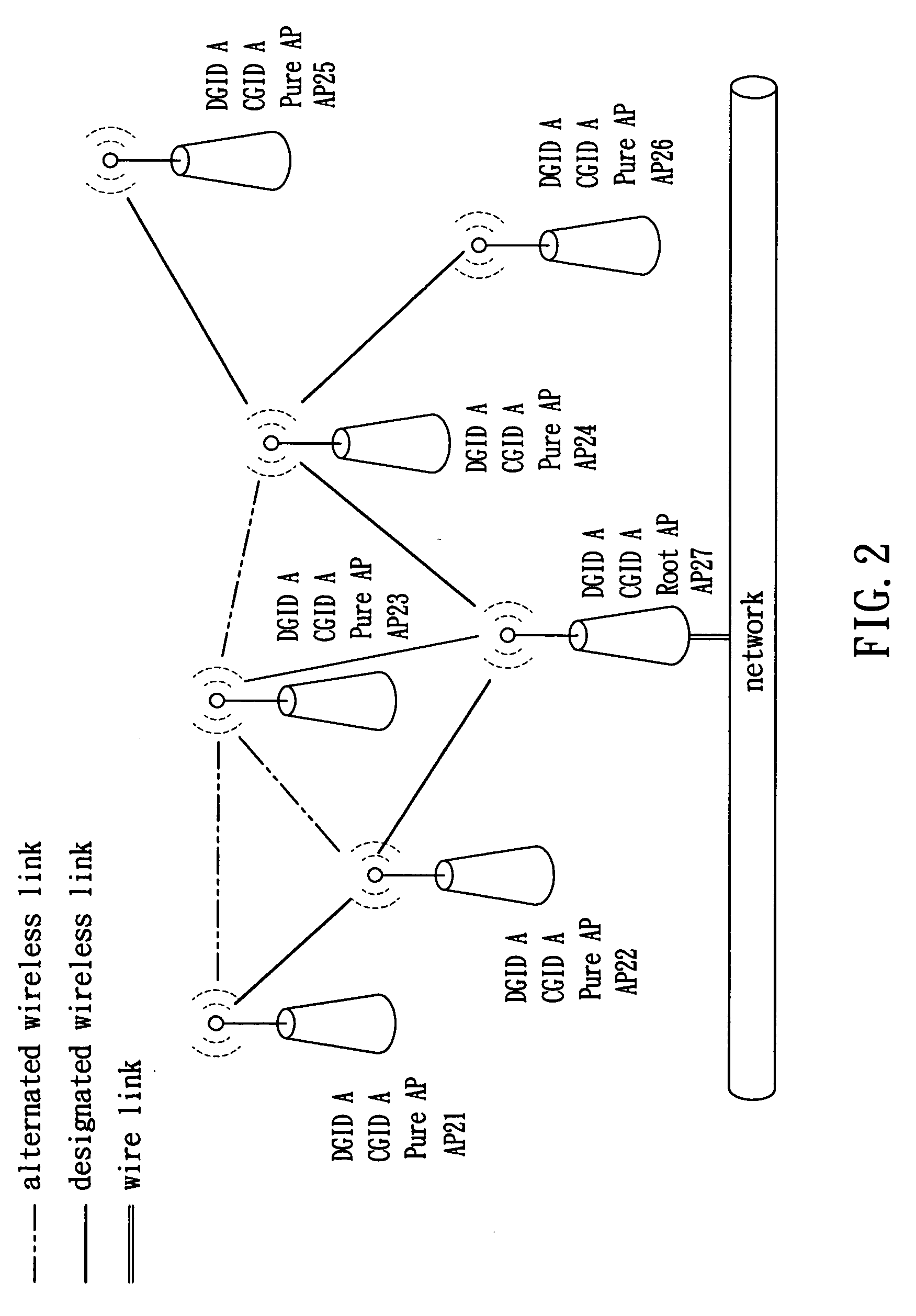Wireless routing mechanism for same group and inter-group operations covering both wire network and wireless network
a wireless routing and inter-group technology, applied in the direction of wireless commuication services, network topologies, electrical appliances, etc., can solve the problems of not publishing a standard for ieee 802.11 wireless networking based network topology, no relevant draft has been initiated, and the wireless topology system developed by network service providers cannot meet the needs of vast users, so as to improve network performance and eliminate the effect of detail setting
- Summary
- Abstract
- Description
- Claims
- Application Information
AI Technical Summary
Benefits of technology
Problems solved by technology
Method used
Image
Examples
first embodiment
[0072] Referring to FIG. 2, a first preferred embodiment of the invention is shown in which the wireless routing mechanism is applicable to a single group state. As shown in FIG. 2, each AP is labeled with DGID, CGID, AP roles of stable topology (e.g., Pure AP and Root AP), and serial numbers of APs (e.g., AP21, AP22, and AP27) in which only AP27 is connected to a wire network (e.g., Ethernet). For any activated AP, its role is Initial AP. After AP27 receiving a management frame from any of other APs, AP27 may analyze an added IE therein and change its role as Root AP after determining that there is no Root AP in the APs. Attribute negotiation between any two APs is done by analyzing a probe request frame sent from each AP. For example, AP24 may establish a wireless link with AP27 because it has a DGID the same as that of AP27. Similarly, other wireless links can be established accordingly. The number of wireless links is thus increased. Each AP may form more than one wireless link....
sixth embodiment
[0078] Referring to FIG. 9, a seventh preferred embodiment of the invention is shown. As compared with FIG. 8, AP47 may immediately be aware that itself is no more Root AP when Root AP (e.g., AP47) of group B is disconnected from wire network. AP47 then informs other APs of group B by sending a probe request frame. After receiving the probe request frame, each of other APs may be aware that Root AP of group B does not exist as indicated by IE therein. Next, AP47, AP48, AP49, and AP410 search group B in order to find whether there is a Root AP in group B. Next, AP47, AP48, AP49, and AP410 enter escape mode after not finding a Root AP in group B. Entering escape mode means an AP is about to enter a group. Escape mode field means whether an AP is willing to accept an AP having a different DGID, establish a link in escape mode, and establish a link with other groups. After AP47, AP48, AP49, and AP410 entering escape mode, they can receive probe request frames sent from other groups for ...
PUM
 Login to View More
Login to View More Abstract
Description
Claims
Application Information
 Login to View More
Login to View More - R&D
- Intellectual Property
- Life Sciences
- Materials
- Tech Scout
- Unparalleled Data Quality
- Higher Quality Content
- 60% Fewer Hallucinations
Browse by: Latest US Patents, China's latest patents, Technical Efficacy Thesaurus, Application Domain, Technology Topic, Popular Technical Reports.
© 2025 PatSnap. All rights reserved.Legal|Privacy policy|Modern Slavery Act Transparency Statement|Sitemap|About US| Contact US: help@patsnap.com



